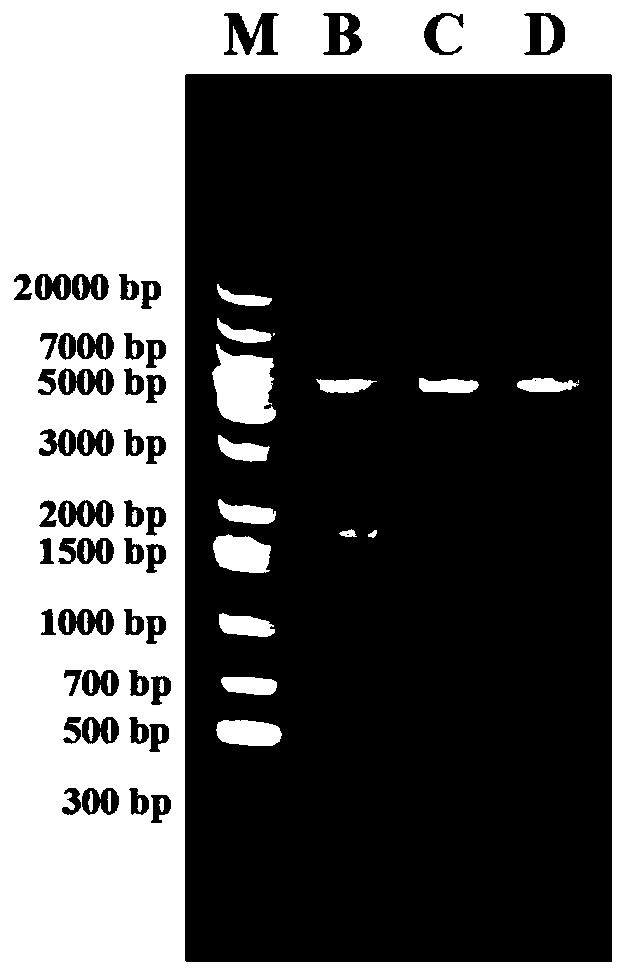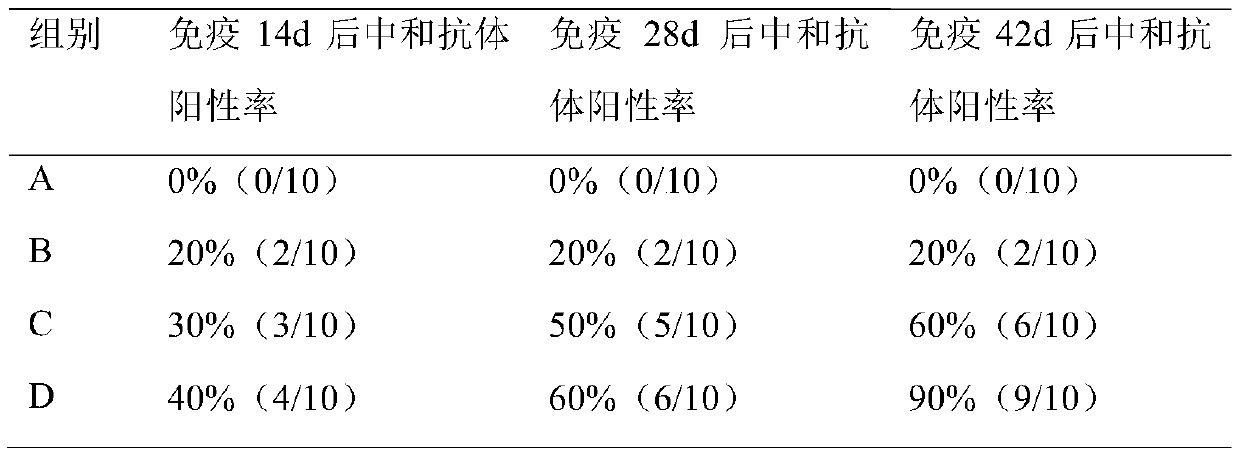Codon-optimized peste des petits ruminants virus F gene nucleic acid vaccine
A technology of codon optimization and Peste des Petits Ruminants, which is applied in the field of molecular biology and can solve the problem of inefficient expression of foreign genes
- Summary
- Abstract
- Description
- Claims
- Application Information
AI Technical Summary
Problems solved by technology
Method used
Image
Examples
Embodiment 1
[0029] Example 1: Design and synthesis of codon-unoptimized and optimized PPRV F gene sequences
[0030] 1. Synthesis of the codon-unoptimized PPRVF gene sequence
[0031] Taking the PPRV Nigeria / 75 / 1 strain as the reference sequence (GenBank: X74443), first select the F gene with a full length of 1641bp, which was synthesized by Sangon Bioengineering (Shanghai) Co., Ltd. and loaded into the vector pUC57 to form the recombinant plasmid pUC57-F , the synthesized sequence was confirmed to be correct by sequencing.
[0032] 2. Design and synthesis of codon-optimized PPRV F gene sequence without signal peptide
[0033] (1) Taking the PPRV Nigeria / 75 / 1 strain as the reference sequence (GenBank: X74443), first select the F gene, the full length is 1641bp, and the remaining 1584bp after removing the 5′ terminal signal peptide (57bp), and then use the software OptimumGeneTM to analyze its gene sequence , to find out its codon usage bias, and at the same time find out the codon sites...
Embodiment 2
[0038] Embodiment two: the construction of eukaryotic expression vector pcDNA3.1 (+)-F, pcDNA3.1 (+)-F-opt, pcDNA3.1 (+)-JEVSP-F-opt
[0039] 1. Obtaining the target fragment and vector
[0040] (1) Obtaining F fragment and large linear fragment of plasmid pcDNA3.1(+)
[0041] The recombinant vector pUC57-F containing the target sequence provided by Sangon Bioengineering (Shanghai) Co., Ltd. was digested with BamH I and Xba I to obtain the F fragment; the enzyme digestion reaction system was: 10×Tango Buffer 4 μL, plasmid pUC57 -F 10 μL, BamH I and Xba I 1.5 μL each, rehydrate to 40 μL, 37°C, 2h;
[0042] Digest vector plasmid pcDNA3.1(+) with BamH I and Xba I to obtain a large linear fragment of plasmid pcDNA3.1(+); enzyme digestion reaction system: 10×Tango Buffer 4μL, plasmid pcDNA3.1(+) 10μL , 1.5 μL each of BamH I and Xba I, add water to 40 μL, 37°C, 2h;
[0043] (2) Obtaining large linear fragments of F-opt and plasmid pcDNA3.1(+)
[0044] The recombinant vector pUC5...
Embodiment 3
[0060] Example 3: Identification of recombinant plasmids pcDNA3.1(+)-F, pcDNA3.1(+)-F-opt, pcDNA3.1(+)-JEVSP-F-opt
[0061] 1. Recombinant plasmids pcDNA3.1(+)-F, pcDNA3.1(+)-F-opt, pcDNA3.1(+)-JEVSP-F-opt transform Escherichia coli DH5α competent cells:
[0062] (1) Add 10 μL of the linker to the Ep tube containing 100 μL of DH5α competent cells, gently tap the tube wall several times, mix well, and ice-bath for 30 minutes. (2) Place the Ep tube in a water bath at 42°C for 90s;
[0063] (3) Slowly add 1 mL of LB medium to the Ep tube, shake at 37°C, 225 rpm, for 60 min;
[0064](4) Spread the bacterial solution on an LB plate containing ampicillin (0.1 g / L), and culture overnight at 37°C.
[0065] 2. Screen positive clones
[0066] Randomly pick a single colony, inoculate it into a culture test tube (LB medium containing 0.1 g / L ampicillin), shake at 225 rpm at 37°C, and culture overnight.
[0067] 3. A small amount of recombinant plasmids pcDNA3.1 (+)-F, pcDNA3.1 (+)-F-o...
PUM
 Login to View More
Login to View More Abstract
Description
Claims
Application Information
 Login to View More
Login to View More - R&D
- Intellectual Property
- Life Sciences
- Materials
- Tech Scout
- Unparalleled Data Quality
- Higher Quality Content
- 60% Fewer Hallucinations
Browse by: Latest US Patents, China's latest patents, Technical Efficacy Thesaurus, Application Domain, Technology Topic, Popular Technical Reports.
© 2025 PatSnap. All rights reserved.Legal|Privacy policy|Modern Slavery Act Transparency Statement|Sitemap|About US| Contact US: help@patsnap.com



